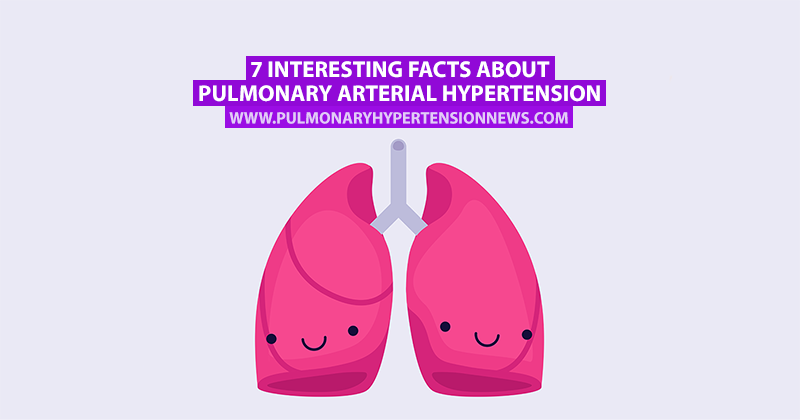7 Interesting Facts About Pulmonary Arterial Hypertension

What do you know about pulmonary arterial hypertension? Are you a PAH expert? Maybe you’re simply curious because someone you love has the life-threatening lung condition.
Here are some interesting facts you should know about PAH (source: Active Beat):
1. Women are more at risk than men. PAH affects men and women of all ages and races. Women between the ages of 20 and 50 years old make up the most cases.
2. The very first PAH case was diagnosed in 1891. The first recorded diagnosis can be traced back to Germany in 1891. Unfortunately at the time there were few treatments and the patient succumbed to the disease.
3. Diagnosing PAH can take several years. Patients affected with PAH often go years without a formal diagnosis. This is often due to not recognizing milder symptoms that come and go with exercise or other physical exertion.
MORE: Who is more at risk of developing pulmonary hypertension?
4. PAH symptoms reveal themselves with time. This progressive disease begins with mild symptoms such as shortness of breath, chest pain, and fainting, typically brought on by exercise or strenuous physical activity. That’s why it’s easy to shrug off symptoms in the early stages of the condition.
MORE: How is pulmonary hypertension diagnosed? Find out more here.
5. There are several causes of PAH. Although many factors are thought to contribute to PAH, more than 15 percent of all patients have heritable pulmonary arterial hypertension caused by one of two things:
- A family history of pulmonary arterial hypertension
- An autosomal dominant genetic condition caused by mutations in the BMPR2 gene or TGFbeta pathway
- Diet drug use — i.e., Fen Phen, Pondimin, Redux, and methamphetamines
6. Pulmonary arterial hypertension requires treatment. Eventually, the symptoms of PAH become impossible to ignore. Medical treatment will be necessary to control the internal blood pressure of the pulmonary artery and protect the heart muscles from weakening — and eventually failing.
7. There’s no cure for pulmonary arterial hypertension. Although there is no known cure for PAH, medications such as blood thinners and dilation aids are often prescribed to help the patient live a normal life. Organ transplant of the lungs and heart is only recommended for severe conditions when other therapies have not worked.
Pulmonary Hypertension News is strictly a news and information website about the disease. It does not provide medical advice, diagnosis or treatment. This content is not intended to be a substitute for professional medical advice, diagnosis, or treatment. Always seek the advice of your physician or another qualified health provider with any questions you may have regarding a medical condition. Never disregard professional medical advice or delay in seeking it because of something you have read on this website.







